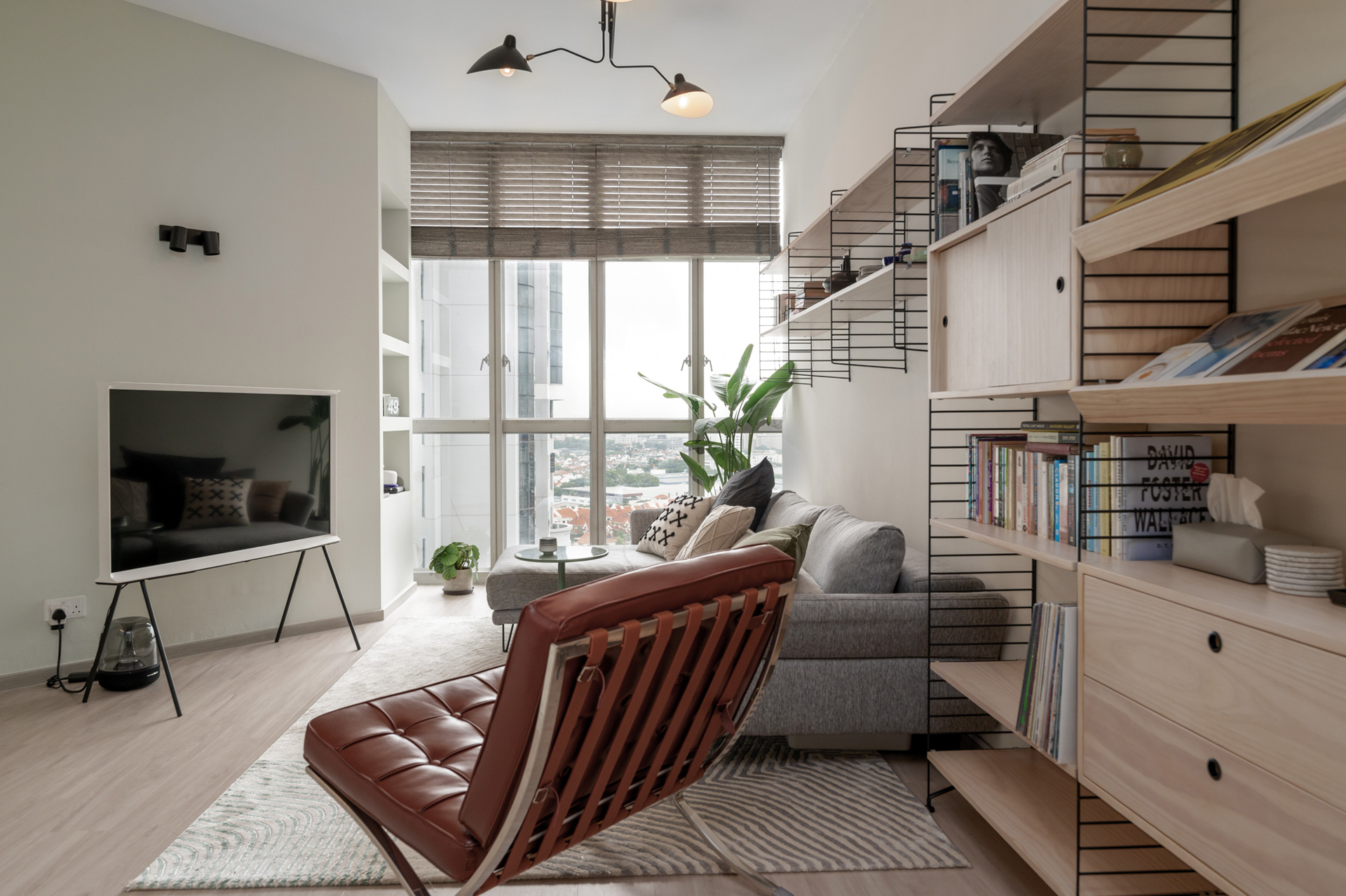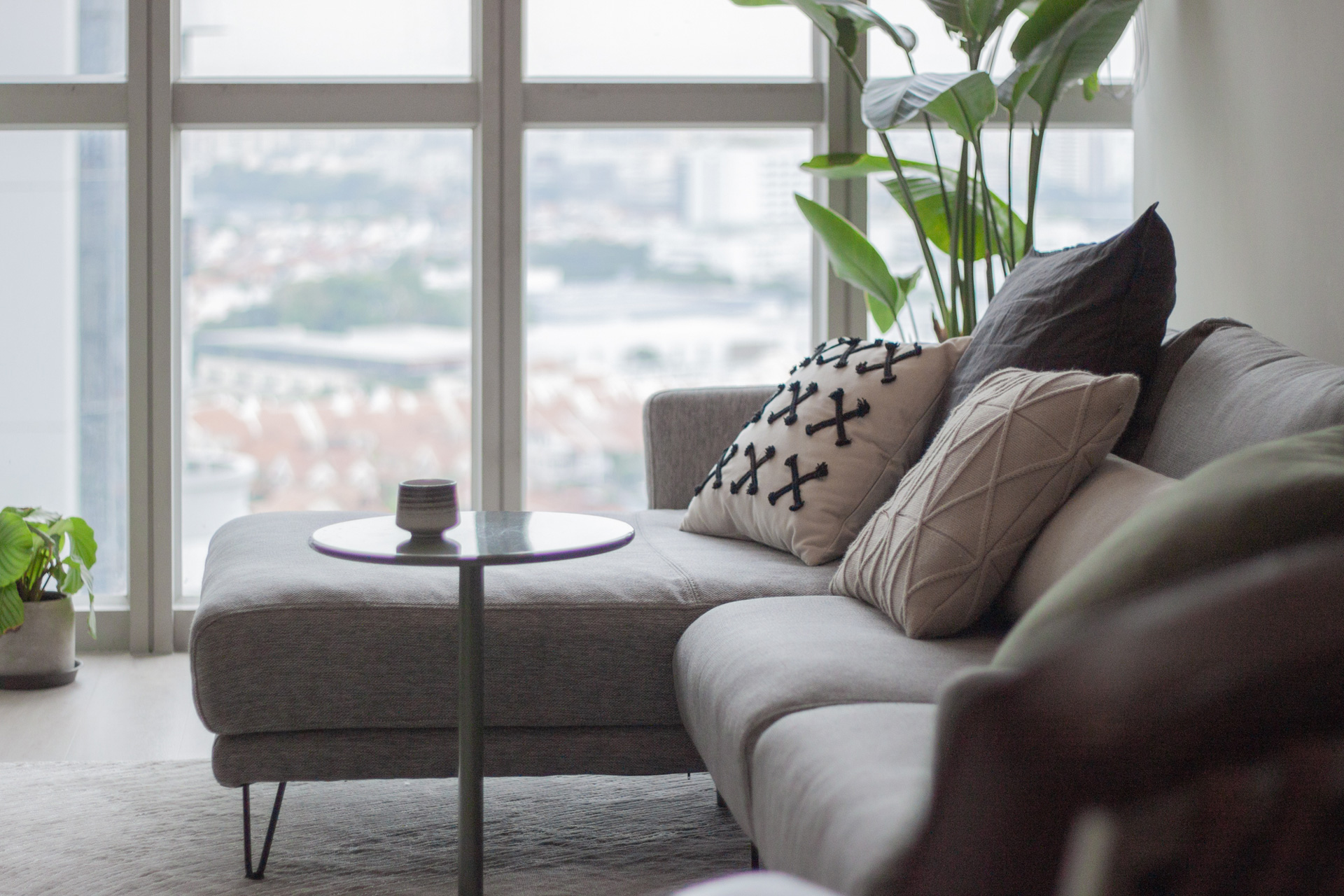Coastal interior design captures the feeling of light, calm, and connection to the sea. While Singapore may not have many beachfront landed homes, we’re fortunate to have apartments and houses that open up to sea views. The coastal aesthetic here is less about seashell motifs or nautical stripes, and more about embracing natural light, organic textures, and a sense of quiet ease.

Photo credit: Benjamin Moore
In Singapore, coastal design often takes a more urban interpretation. It’s about creating a home that feels breezy and grounded at the same time. For homes with a view of the sea, the design should frame that view—allowing light and reflections to play across soft hues of blue, green, and sand.
At Bayshore, a residence we designed, the client wanted her home to echo the calm and clarity of the ocean. Having lived in Tokyo and Sweden, she gravitated toward minimalism, natural finishes, and a soft colour palette.

We explored beautiful sea-inspired paint colours from Benjamin Moore, considering soft muted blues, deep sea greens, and gentle aqua tones. We love how Benjamin Moore names their colours—each one inspirational—and how their paint produces a soft, muted, and layered effect, perfectly complementing the coastal mood. The home feels quietly coastal, not themed, more like the sea interpreted through calm restraint.

Photo credit: Benjamin Moore
If your home faces the sea, it’s important to consider Singapore’s humidity and salt air. Metal fixtures can corrode over time, so we recommend using aluminium or coated finishes for outdoor grilles, balcony furniture, and gates. Thoughtful detailing ensures your home stays beautiful and low-maintenance.

We often look for soft furnishings and accents from Island Living, a Singapore-based store that offers homeware inspired by tropical living. Their rattan pieces, linen textiles, and handwoven decor items bring a casual elegance that complements coastal interiors perfectly.

Photo credit: Island Living
We’re currently designing another coastal-inspired home along East Coast Road, which got our team reflecting on how different people interpret the idea of a “coastal home.” For some, it’s about the slow rhythm of island life. For others, it’s about clean lines and an appreciation of natural light. Coastal doesn’t have to mean “beachy”—it can mean serenity, simplicity, or even a touch of Scandinavian restraint.

Here are some guiding questions we use with clients to help define their coastal vision:
What does a “coastal home” mean to you?
Is it more about relaxed living, certain materials, light, or atmosphere?
Which coast are we imagining?
Mediterranean, Australian surf, the rugged South African coastline, or something closer to your own memories?
Are there emotions or memories tied to the sea you’d like the space to evoke?
Perhaps a favourite beach, a specific landscape, or the sound of waves at dusk.
How should the design feel when you enter?
Calm and minimal? Playful and layered? Breezy and bright?
Are there architectural features we should respond to?
The ceiling height, sun direction, or how the rooms flow into one another?
Would you like any traditional or regional references in the design?
Perhaps a hint of local craft or a subtle material reference.
How do you want to live in the space?
Is it a quiet retreat, a place to host, or both?

Bringing Coastal Interior Design to Life
Coastal interior design is more than an aesthetic; it’s a mindset. It celebrates air, light, and texture. It values comfort over formality, balance over excess. Whether it’s through linen drapery, rattan accents, raw timber, or calm muted tones, the coastal style reminds us that design can slow us down, connect us to nature, and create room to breathe.

At Pivot, our work in residential interior design, wellness spaces, and brand environments often draws from the same principles: a sensitivity to light, mood, and material. When we design a coastal home, it isn’t about recreating the beach, but about designing a feeling—one that feels fresh, open, and deeply human.